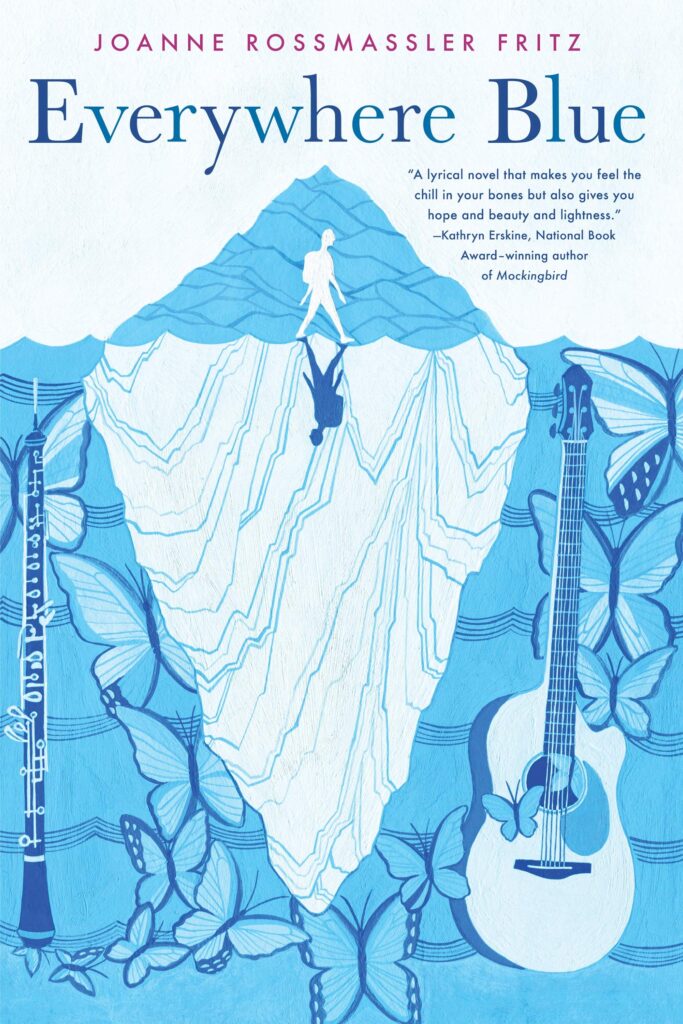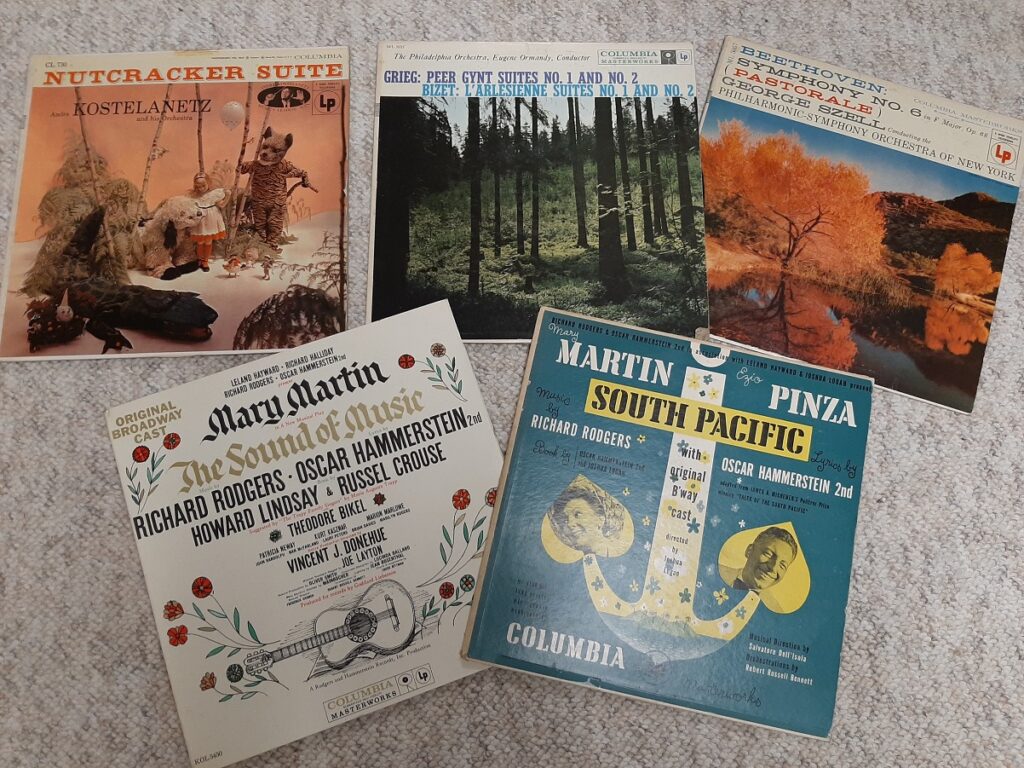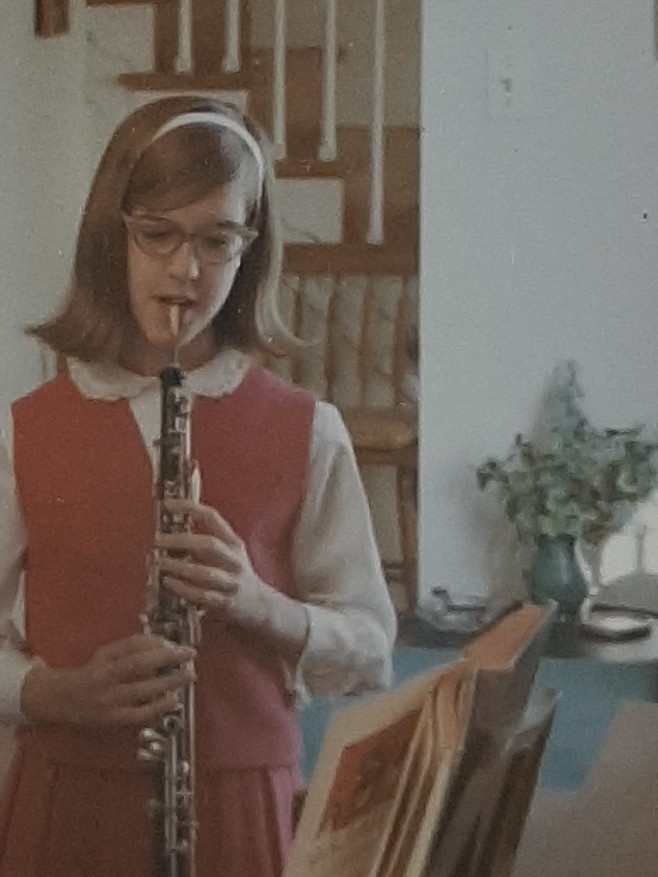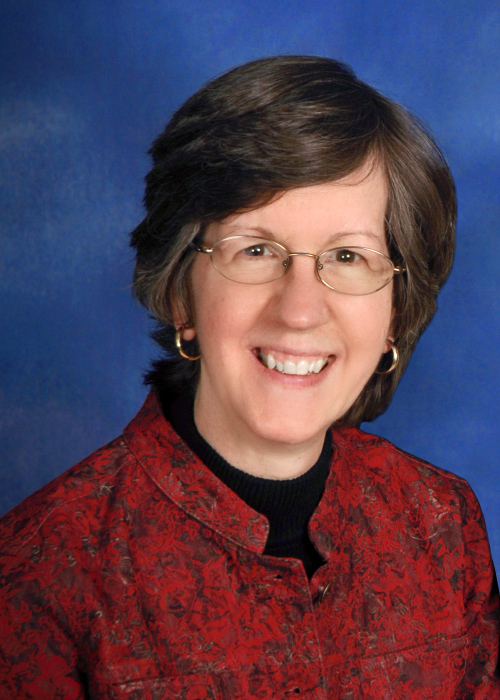HOW CLASSICAL MUSIC PLAYS A VITAL ROLE IN EVERYWHERE BLUE, a guest post by Joanne Rossmassler Fritz

Music often plays a role in MG or YA novels. The music is nearly always new, whether it’s pop or rock or rap. A singer might be mentioned in the text itself, like Beyonce in FAT CHANCE, CHARLIE VEGA by Crystal Maldonado. Or the characters in a novel might audition for a Broadway musical, as in BETTER NATE THAN EVER by Tim Federle, or a school musical, as in CAN’T TAKE THAT AWAY, by Steven Salvatore.
Many novels have a playlist, a list of tunes that inspired the author, music they listened to while writing the book. Afterward, they share the playlist with fans.
My MG debut novel in verse, EVERYWHERE BLUE, takes a different approach.
Twelve-year-old Madrigal Lovato, nicknamed Maddie, loves music, math, and everything in its place. She is growing up in a musical family. Her mother teaches opera, her father is a piano tuner by day and a composer by night. There is always music in the house. And it’s always classical.
ADVERTISEMENT
ADVERTISEMENT
In EVERYWHERE BLUE, music represents emotions.
When Maddie’s beloved older brother, Strum, walks away from his college campus and vanishes, Maddie’s well-ordered world splinters apart. Her parents are always distracted by the search for Strum, and her sixteen-year-old sister Aria reacts by staying out late.
Maman stops humming and singing, Daddy stops playing classical records. The house falls silent.
Maddie continues to practice her oboe in her room alone. She plays the oboe in her school orchestra and music is her world. This is why I opened the book with Maddie walking to her after-school music lesson. The story begins in November, when darkness comes on early. Maddie also has seasonal affective disorder, so early darkness makes her sad. The music I mention reflects those feelings.

I tried to infuse every part of my novel with a piece of classical music, including “Morning Mood” from Peer Gynt Suite No. 1 by Edvard Grieg, “Largo” by Antonin Dvorak, “Adagio for Strings” by Samuel Barber, “Ode to Joy” from Symphony No. 9 by Ludwig Von Beethoven, and more.
I describe how the music makes Maddie feel, so even if the reader doesn’t know the piece, they’ll know just how it can affect people. Whether it’s “the most haunting music I’ve ever heard” (“Adagio for Strings”) or “the brightest, most jubilant music I know” (“Ode to Joy”), music is a metaphor for Maddie’s emotions.
Readers may not be familiar with all the classical pieces I mention in the book. But many readers should know Peter and the Wolf, a musical composition by Sergei Prokofiev. He called it a “symphonic fairy tale for children.” It teaches young people the different instruments in an orchestra, by assigning them to characters in his tale. Peter is represented by the strings, his grandfather by the bassoon, A clarinet represents the cat, a flute represents the bird. And three French horns represent the wolf.
Finally, the oboe represents a duck, because, yes, an oboe sounds a lot like the quacking of a duck.

I played the oboe in junior high school. We even performed a student version of Peter and the Wolf and I had a brief solo. It’s been a long time, but I can still remember the crushed-leaf taste of the reed.
As I wrote and revised EVERYWHERE BLUE, music became more and more important to my theme. I realized the French horns’ forbidding, ominous music in Peter and the Wolf was perfect for Maddie’s concern over her missing brother, Strum, and could also symbolize her undiagnosed anxiety.
With each revision, I drew more and more on this recurring theme. Strum’s disappearance throws the family into chaos. Maddie realizes at one point, while listening to the violins play Peter’s theme, that Strum could be Peter. And she hopes he will escape from the wolf of whatever’s troubling him.
French horns are mentioned throughout the novel, and they’re always forbidding, until Part 4, February, when Maddie begins to feel there is hope for finding Strum. Maddie longs for more daylight, and by February, the days are becoming longer. As she listens to Ravel’s Bolero, she realizes the French horns in that piece are not at all forbidding. They don’t threaten. They rise and swell. They lift her up.
Near the end of the novel, Maddie is getting ready for the school concert. And the verse and the music are full of hope.
Music in books can be healing. Music can soothe the soul. Music, in fact, can be a form of salvation.
Meet the author

Joanne Rossmassler Fritz grew up in the suburbs of Philadelphia, surrounded by books and music. She has worked in a publishing company, a school library, and the Children’s Department of a large independent bookstore. She’s been writing most of her life, but didn’t get serious about it until after she survived the first of two brain aneurysm ruptures in 2005. She and her husband live outside West Chester, PA, and are the parents of two grown sons.
Twitter: @JoanneRFritz
Instagram: @JoanneRossFritz
Website: https://www.joannerossmasslerfritz.com/
About Everywhere Blue
A brother’s disappearance turns one family upside down, revealing painful secrets that threaten the life they’ve always known.
ADVERTISEMENT
ADVERTISEMENT
When twelve-year-old Maddie’s older brother vanishes from his college campus, her carefully ordered world falls apart. Nothing will fill the void of her beloved oldest sibling. Meanwhile Maddie’s older sister reacts by staying out late, and her parents are always distracted by the search for Strum. Drowning in grief and confusion, the family’s musical household falls silent.
Though Maddie is the youngest, she knows Strum better than anyone. He used to confide in her, sharing his fears about the climate crisis and their planet’s future. So, Maddie starts looking for clues: Was Strum unhappy? Were the arguments with their dad getting worse? Or could his disappearance have something to do with those endangered butterflies he loved . . .
Scared and on her own, Maddie picks up the pieces of her family’s fractured lives. Maybe her parents aren’t who she thought they were. Maybe her nervous thoughts and compulsive counting mean she needs help. And maybe finding Strum won’t solve everything—but she knows he’s out there, and she has to try.
This powerful debut novel in verse addresses the climate crisis, intergenerational discourse, and mental illness in an accessible, hopeful way. With a gorgeous narrative voice, Everywhere Blue is perfect for fans of Eventown and OCDaniel.
ISBN-13: 9780823448623
Publisher: Holiday House
Publication date: 06/01/2021
Pages: 256
Age Range: 8 – 12 Years
Filed under: Uncategorized
About Amanda MacGregor
Amanda MacGregor works in an elementary library, loves dogs, and can be found on BlueSky at @amandamacgregor.bsky.social.
ADVERTISEMENT
ADVERTISEMENT
SLJ Blog Network
The 2025 Ninja Report: It’s Over
Book Giveaway: Foundling by D.M. Cornish
Ghost Town | Review
30 Contenders? Our Updated Mock Newbery List
When Book Bans are a Form of Discrimination, What is the Path to Justice?
ADVERTISEMENT







